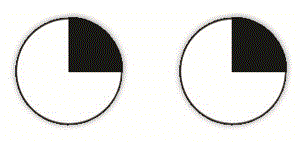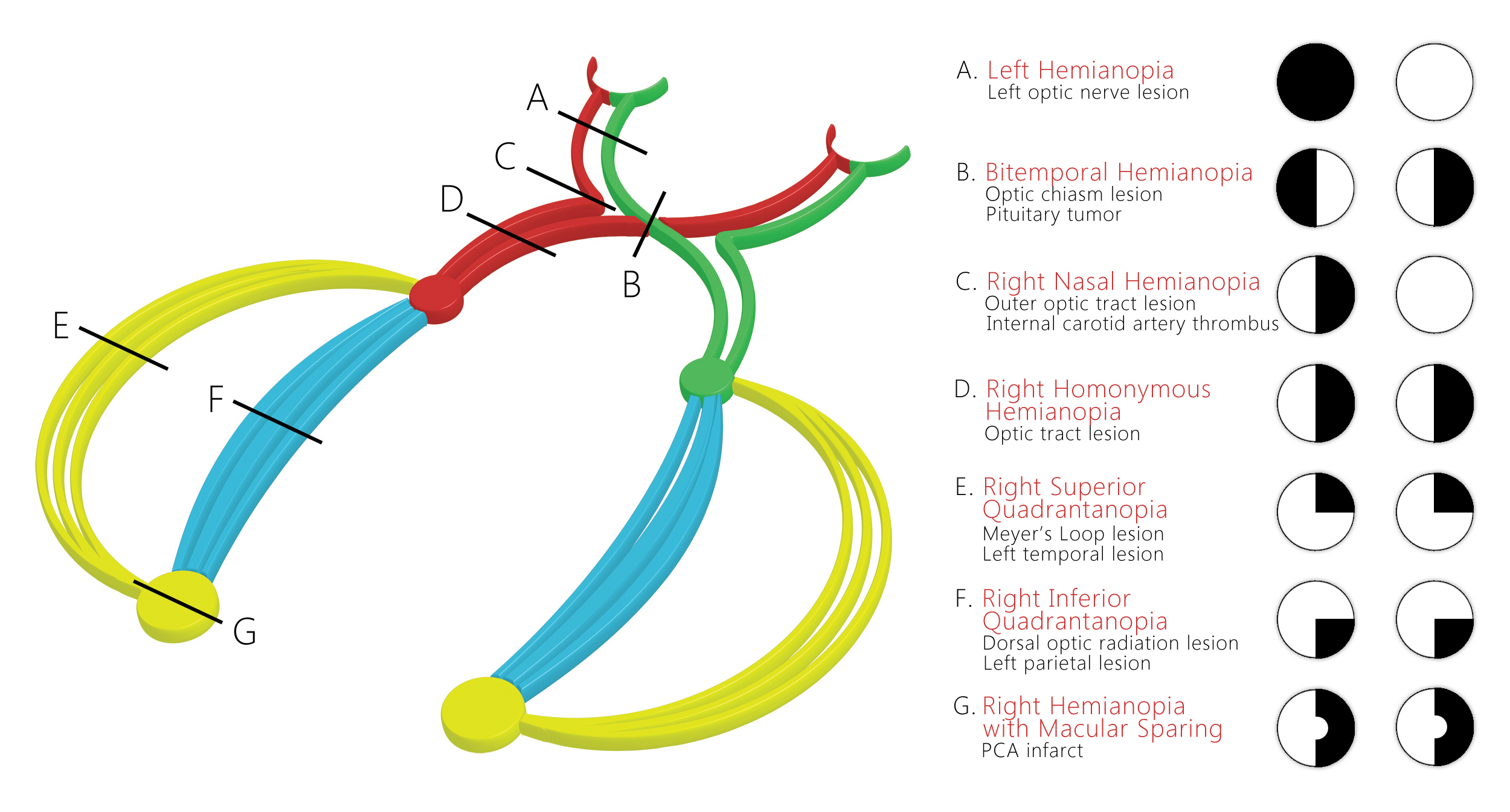WBR0585
| Author | [[PageAuthor::Serge Korjian M.D. (Reviewed by Serge Korjian)]] |
|---|---|
| Exam Type | ExamType::USMLE Step 1 |
| Main Category | MainCategory::Pathophysiology |
| Sub Category | SubCategory::Head and Neck, SubCategory::Neurology |
| Prompt | [[Prompt::A 60 year-old-man presents to the neurology clinic for 2 months of left-sided throbbing headache. The man has no significant past medical history except for hypertension. He describes a constant retro-orbital headache non-responsive to regular analgesic therapy. He did not make much of the headache until recently when he noticed changes in his visual field which prompted him to seek medical care. His neurologist orders a brain MRI that shows a large left internal carotid artery aneurysm at the origin of the ophthalmic artery. Which of the following visual field defects would you expect in this patient?]] |
| Answer A | [[AnswerA:: ]] ]]
|
| Answer A Explanation | [[AnswerAExp::Homonymous hemianopia involves loss of vision on one side. It usually occurs due to a lesion to the optic tracts or a PCA stroke although the latter usually has associated macular sparing. This lesion is not seen in patients with carotid artery aneurysms.]] |
| Answer B | [[AnswerB:: ]] ]]
|
| Answer B Explanation | [[AnswerBExp::Right upper quadrantanopia is characterized by loss of vision in the right upper quadrant of the visual field. It usually occurs with left temporal lesions due to the interruption of the left Meyer's loop. This pattern is unusual with carotid artery aneurysms.]] |
| Answer C | [[AnswerC:: ]] ]]
|
| Answer C Explanation | [[AnswerCExp::Left nasal hemianopia usually occurs with lesions of the internal carotid artery (internal carotid thrombosis or aneurysms) at the origin of the ophthalmic artery. The lesion is usually located laterally to the optic chiasm interrupting part of the optic nerve as it becomes the optic tract. Our patient would best fit this pattern of visual field loss.]] |
| Answer D | [[AnswerD:: ]] ]]
|
| Answer D Explanation | AnswerDExp::This lesion portrays bitemporal hemianopia usually seen in large prolactinomas that compress the optic chiasm. It is unusual in cases with internal carotid artery lesions. |
| Answer E | [[AnswerE:: ]] ]]
|
| Answer E Explanation | AnswerEExp::Right lower quadrantanopia is characterized by loss of vision in the right lower quadrant of the visual field. It usually occurs with left parietal lesions due to the interruption of the left dorsal optic radiations. |
| Right Answer | RightAnswer::C |
| Explanation | [[Explanation::
|
| Approved | Approved::Yes |
| Keyword | WBRKeyword::Nasal hemianopia, WBRKeyword::Carotid artery aneurysm, WBRKeyword::Visual field defects, WBRKeyword::Special sensory, WBRKeyword::Ophthalmology, WBRKeyword::Sight, WBRKeyword::Eye, WBRKeyword::Aneurysm |
| Linked Question | Linked:: |
| Order in Linked Questions | LinkedOrder:: |